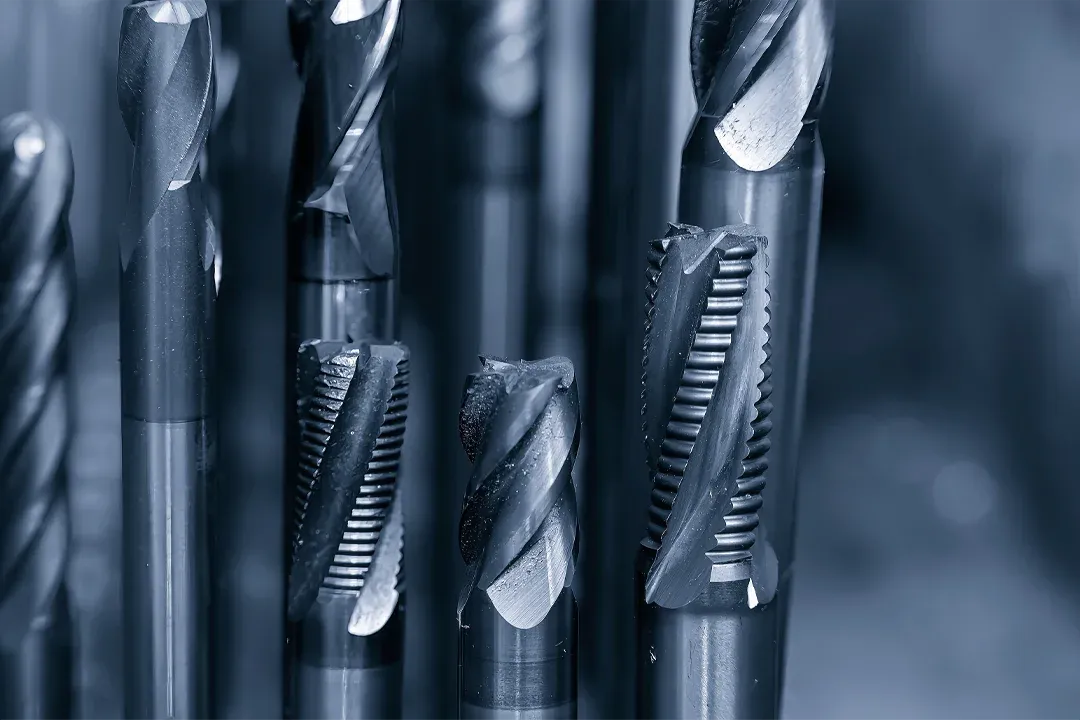
Regrinding taps - is it worth it?
It is part of the natural life cycle of a tap - at some point even the highest quality tool wears out. You probably have taps lying around in a drawer that have become blunt or can no longer produce clean threads due to chipped teeth or cold welding. You should no longer work with damaged tools, otherwise you risk poor quality results or damage to the component. But does this mean that a worn tap is always a case for the garbage can?
Absolutely not! Fortunately, taps can be reground. Although not all damage can be repaired in this way, many classic signs of wear disappear when a tap is professionally reground and you can use the tool again as usual. This saves valuable resources and also saves you a lot of money. But beware, there is a lot to consider when regrinding taps. What exactly? Let's take a look together.
When should a tap be reground?
How do you even know if you should have your tap reground? You often notice this directly at work. If your threads no longer turn out as perfectly and precisely as you are used to, then it is likely that wear on the tap is the culprit. At the latest then it is time to sharpen the tap. But it's best not to let it get that far. Check your tool after every use for damage, blunt cutting edges or cold welding. You can then remove taps that are no longer in optimum condition directly from circulation and mark them for regrinding before you cut a thread.
You can regrind taps at these points
What does it actually mean to sharpen a tap? Regrinding a tap is primarily about the lead, but the rake faces are also taken into account.
Regrinding the lead of the tap
The chamfer bears the main load when tapping, so this is where most of the wear occurs. When regrinding the tap, the chamfer often has to be shortened slightly to completely remove the wear. To ensure that the tap works just as well after regrinding as before, the lead length, the setting angle and the lead clearance angle are particularly important. The main focus is therefore on these variables when the tap is reground. The diameter of the lead must also be calculated precisely.
Regrinding taps with a peel cut is a special case. To sharpen such taps, special devices are used that can be swiveled horizontally and vertically. In this way, the peel cut inclination and peel cut angle can be set correctly.
Regrinding the rake face of the tap
Although wear mainly occurs in the cutting edge area, this does not mean that damage cannot also occur in other areas. In order to remove these, the rake faces are also taken into account when regrinding a tap. The rake angle is the decisive factor here, which must not be changed by grinding. The rake angle is measured directly on the tool before regrinding the tap and checked again after the grinding process. Regrinding was only successful if the value is correct.
This must be observed during the grinding process in order to regrind taps correctly
The regrinding of taps is a small-scale job in which many different variables have to interact correctly. This starts with the selection of the right grinding wheel. Grinding wheels are available in different materials and shapes, which are primarily based on the diameter and shape of the tap grooves. Once the right grinding wheel has been selected for the application, the swivel angle must also be set correctly.
It must also be determined whether the regrinding of the tap is to be carried out using dry or wet grinding. Wet grinding usually delivers better results, but is not always possible everywhere. Finally, the infeed size and the feed rate also have an effect on how well the tap can be reground and how much wear occurs on the grinding wheel itself.
The final step after regrinding the tap is deburring. The grinding wheels inevitably leave a burr during each grinding process, which would have a negative effect on the cutting performance of the tool. It is therefore particularly important to remove these burrs from the tap after regrinding.
Can you regrind your taps yourself?
Even if it is not always immediately obvious, taps are highly complex tools with a large number of precisely coordinated diameters, angles and lengths. It is enough to change just one of these elements beyond the intended tolerance and the tap can no longer produce flawless and dimensionally accurate threads. Such deviations can occur very quickly when regrinding a tap. Before regrinding, a tap must therefore always be carefully assessed to find out what damage has occurred and how exactly it can be rectified. And this is precisely why the regrinding of taps is a task that belongs exclusively in the hands of professionals. Experience and the right equipment are required to correctly determine the actual and target values and to carry out all the necessary calculations without errors. So before you attempt to regrind your tap yourself, it is better to use the services of a professional provider. Otherwise, instead of saving costs, you will quickly end up with additional costs!
We happen to know someone you can turn to with confidence! You are in the best hands with the BAER regrinding service if you want to have your taps sharpened. We always work quickly, cleanly and reliably and get the best out of your worn taps. Interested? Then please send your inquiry to our customer service team.
